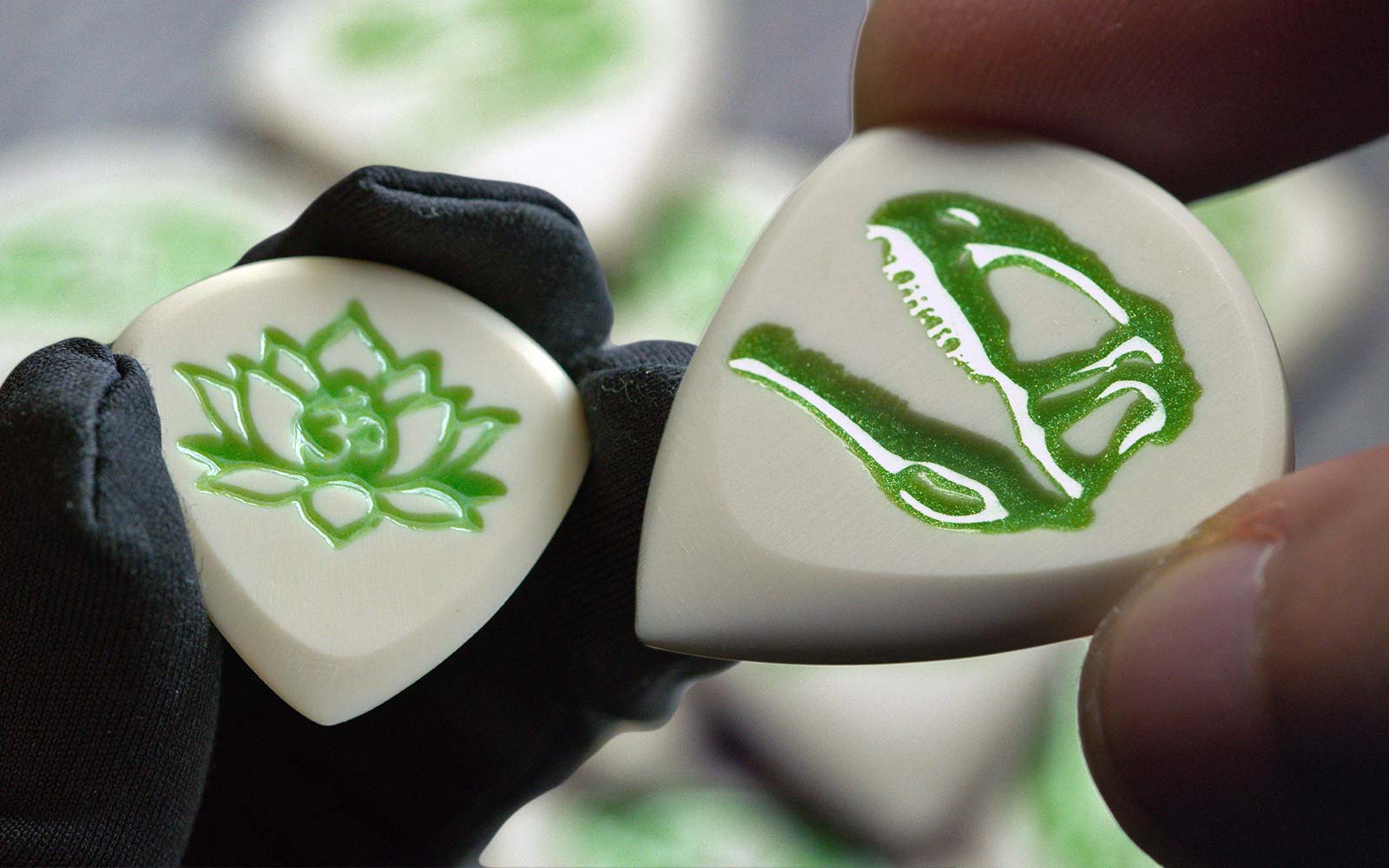Standard Guitar Tuning & How It Came To Be
by Alex Rodea June 13, 2024
We've all picked up a guitar in standard tuning and started playing our favorite song, but where why is it the most commonly used tuning for six-string guitars?
This basic guitar tuning involves tuning the six guitar strings to the notes E, A, D, G, B, and E from thickest to thinnest.
It’s been used for many years in different music genres and by countless famous guitar players.
In this article, we'll explore what standard E tuning is, how to tune your guitar to it, and tips for playing in this tuning.

The History of Standard Guitar Tuning
First appearing in Spain in the 16th century as a small, four-stringed instrument called the vihuela, the guitar can trace its roots back to the 16th century.
Eventually, the guitar evolved into the instrument we know today, with six strings and a standard tuning.
Tunings varied widely between regions and even among individual players in the early days of the guitar.
Many early guitars were tuned to open tunings, where the strings were tuned to form a chord when played open.
These tunings allowed for simple chord shapes and easy fingerpicking.

The Evolution of Standard Tuning
Standard tuning emerged with the evolution and popularity of the guitar. This tuning, which eventually became known as E standard tuning, likely originated from the lute, a predecessor to the guitar with a similar tuning.
By the early 19th century, most guitars were tuned to a variation of E standard tuning, with the strings tuned to E, A, D, F# (or G), B, and E.
This tuning provided a versatile range of notes and allowed for a wide variety of chord shapes and scales.
In the early 20th century, as guitar music became more complex and technical, some guitarists began experimenting with alternate tunings to create new sounds and effects.
However, E standard tuning remained the most commonly used tuning for many guitarists.

An Overview of E Standard Tuning
Due to its versatile range of notes and ease of chord and scale shapes, standard E tuning is so widely used.
High E strings provide melodic high notes, while low E strings provide powerful bass notes.
Additionally, the tuning allows for simple chord progressions and power chord shapes.
In addition, standard E tuning is the starting point for many guitarists who are just starting to learn the instrument.
Understanding this tuning is essential for anyone who wants to progress to more advanced techniques and alternative tunings.

How to Tune Your Guitar to Standard E Tuning
Standard E tuning involves tuning the guitar's six strings to the notes E, A, D, G, B, and E, from thickest to thinnest.
This tuning provides a versatile range of notes and allows for easy chord shapes and scale patterns.
Most guitar music is written and performed in standard E tuning, making it essential for any guitarist to master.
There are two main methods for tuning your guitar to standard E tuning: using a digital tuner or tuning by ear.
Using a digital tuner is the easiest and most accurate way to tune your guitar. You can purchase a guitar tuner or use a tuning app on your smartphone.
How to use a tuner to tune your guitar:
-
Turn on the tuner and clip it onto your guitar's headstock. The tuner will pick up the vibrations of the strings and display the note it hears.
-
Start with the low E string (the thickest string) and play the string. The tuner will display the note it hears and indicate whether the note is too high, too low, or in tune.
-
Adjust the tuning peg for the lowest string until the tuner indicates that the note is in tune. Turn the peg to the right to tighten the string and raise the pitch, or turn it to the left to loosen the string and lower the pitch.
-
Repeat this process for each string, starting with the A string, then the D string, the G string, the B string, and finally the high E string.
If you don't have a tuner, you can still tune your guitar to standard E tuning by ear.
How to tune your guitar by ear:
Step 1
Start by tuning the low E string to a reference pitch, such as a piano or another tuned instrument. You can also use an online tuning reference tone.
Step 2
Once the low E string is in tune, use the fifth fret of the low E string to tune the A string. Press down on the fifth fret of the low E string and play the A string, adjusting the tuning peg until the A string is in tune.
Step 3
Use the fifth fret of the A string to tune the D string. Press down on the fifth fret of the A string and play the D string, adjusting the tuning peg until the D string is in tune.
Step 4
Use the fifth fret of the D string to tune the G string. Press down on the fifth fret of the D string and play the G string, adjusting the tuning peg until the G string is in tune.
Step 5
Use the fourth fret of the G string to tune the B string. Press down on the fourth fret of the G string and play the B string, adjusting the tuning peg until the B string is in tune.
Step 6
Finally, use the fifth fret of the B string to tune the high E string. Press down on the fifth fret of the B string and play the high E string, adjusting the tuning peg until the high E string is in tune.

Frequently Asked Questions
Is standard guitar tuning 440 hz?
Yes this is the most common pitch used to tune guitars.
What is the standard tuning for acoustic guitar?
The standard tuning for an acoustic guitar is the same as an electric guitar; EADGBE
Why is standard tuning A 440?
This is what is considered concert pitch & has been used as the standard for centuries.
What is the most common guitar tuning?
Standard E is the most common, but also tuning down a half step to E flat. For hard rock & metal, Drop D tuning is also a popular alternate tuning.

Conclusion
So, this is the historical overview of the guitar's most commonly used tuning. Standard E tuning, also known as standard tuning or standard pitch, is the most common tuning for six-string guitars.
Knowing how it works and how to tune a guitar in standard E, is one of the first steps when learning guitar.
Also in Iron Age || General Blog

The 3 Best Engraved Guitar Picks to Personalize Your Playing Experience
by Alex Rodea March 20, 2025
Engraved guitar picks add both style and function, offering extra grip and a personal touch with custom initials, logos, or messages. Whether you're looking for a unique gift or a pick that stands out, check out our top choices and grab your first engraving for free with code...

Guitar Jack Not Working? Here's A Few Easy Steps To Fix Crackles & Pops
by Alex Rodea March 19, 2025

Mono vs Stereo Jacks: Key Differences & How to Wire Them
by Alex Rodea March 06, 2025

The Best Acoustic Guitar Picks: Tips & Considerations For Newbies
by Alex Rodea March 06, 2025

The Best Guitar Picks For Bass: A Guide To Help You Choose
by Alex Rodea March 05, 2025

What is a Fret Wrap, String Muter, or String Dampener?
by Alex Rodea March 05, 2025
+Iron Age Blogs
For the latest news & announcements, check out our News & Updates Blog
For tips, tricks, & other informative articles, check out our General Guitar Blog
Become a newsletter subscriber to get the latest info on new blog articles, receive exclusive promo codes, and be notified of upcoming giveaways!
+Recent Articles
-
The 3 Best Engraved Guitar Picks to Personalize Your Playing Experience
March 20, 2025
-
Guitar Jack Not Working? Here's A Few Easy Steps To Fix Crackles & Pops
March 19, 2025
-
Mono vs Stereo Jacks: Key Differences & How to Wire Them
March 06, 2025
-
The Best Acoustic Guitar Picks: Tips & Considerations For Newbies
March 06, 2025
-
The Best Guitar Picks For Bass: A Guide To Help You Choose
March 05, 2025
-
What is a Fret Wrap, String Muter, or String Dampener?
March 05, 2025
-
Guitar String Names & How To Memorize Them
March 05, 2025
-
How To Make Wooden Guitar Picks: Ebony Spearhead
March 05, 2025
-
Top 3 Best Guitar Picks For Grip: Iron Age Edition
March 05, 2025
-
Are Guitar Picks Necessary? Exploring the Pros, Cons, and Playing Styles
March 05, 2025
+Affiliate Notice
Iron Age is a participant in the Amazon Services LLC Associates Program, an affiliate advertising program designed to provide a way for websites to earn advertising revenues by advertising and linking to Amazon.com
Iron Age Guitar Accessories
226 Douglas Way St
San Antonio, TX 78210
USA
⚔️
“Quality is never an accident. It is always the result of high intention, sincere effort, intelligent direction and skillful execution. It represents the wise choice of many alternatives.”
~William A. Foster (MOH Recipient, 1945)
Sign up for the Iron Age newsletter to Save 15% on your 1st order, plus get exclusive offers, product updates, and early access to giveaways!
© 2025 Iron Age Guitar Accessories.
Est 2015.


Alex Rodea
Author
Founder of Iron Age, my guitar journey began in 2006, fueling a passion for crafting premium guitar accessories that embody timeless style & innovative expression. Through my Stay Tuned Guitar site I also share tips & info for new guitarists, offering everything from beginner tutorials to DIY tips & general music knowledge.